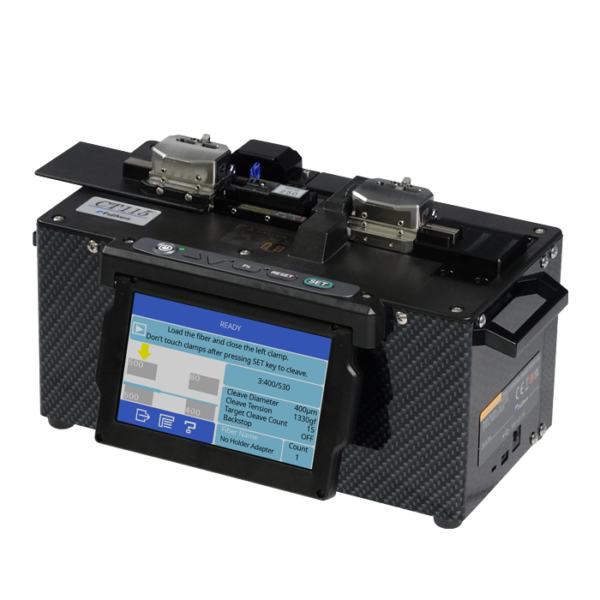Maximize Your Fibre Optic Performance: Understanding Optical Fibre Size Analyser Innovation
The performance of fiber optic systems is seriously influenced by the precision of their size, a factor commonly overlooked in the pursuit of optimum signal honesty. Recognizing the innovation behind optical fibre size analysers reveals the detailed equilibrium between dimension precision and manufacturing quality. These devices not only enhance compliance with industry requirements but also provide real-time insights that can preemptively resolve prospective problems. The ramifications of their usage expand past mere measurement; they can fundamentally modify the landscape of fibre optic performance. What elements should one think about to harness their complete possibility?
Importance of Optical Fiber Diameter
The diameter of optical fiber plays an essential role in identifying the efficiency and effectiveness of communication systems. It influences a number of vital criteria, consisting of the mode of light propagation, depletion, and data transfer ability. Bigger diameters normally enable several light modes, assisting in higher information transmission prices. On the other hand, smaller diameters often tend to sustain fewer settings, which can improve signal clarity and lower crosstalk.

In addition, recognizing the diameter's ramifications can lead to cost financial savings by minimizing the requirement for signal boosting and repeaters in comprehensive networks (optical fibre diameter analyser). In verdict, the relevance of optical fibre diameter can not be overemphasized, as it directly influences the total performance and reliability of modern communication systems

How Size Influences Signal Quality
Signal quality in optical fiber systems pivots substantially on the size of the fiber. The size affects several vital parameters, including attenuation, data transfer, and modal dispersion. A smaller sized size can bring about higher attenuation prices, causing signal loss as light trips via the fibre. This attenuation can jeopardize the stability of the transmitted information, causing a decrease in signal top quality, particularly over lengthy ranges.
Conversely, larger sizes normally enable boosted light capture and lowered modal dispersion, improving signal clearness. In multimode fibers, a bigger core diameter can support several light settings, however it may also introduce intermodal diffusion, which can degrade signal quality. Selecting the optimal fibre size is critical for achieving the wanted efficiency in certain applications.
Moreover, the interaction in between the fiber diameter and the wavelength of the light made use of plays an important function in identifying the effective transmission range and general signal stability. Therefore, recognizing just how fibre size influences signal top quality is vital for network developers and engineers making every effort to maximize optical fiber systems for reliable, high-speed information transmission.
Overview of Diameter Analyser Technology
In many optical fiber manufacturing processes, exact dimension of fiber diameter is crucial for ensuring regular efficiency and high quality (optical fibre diameter analyser). Diameter analysers are sophisticated tools developed to examine the physical dimensions of optical fibers with high accuracy. They utilize sophisticated optical and laser innovations to determine the size, ovality, and concentricity of the fiber, thus giving critical information for high quality control
These analysers can operate in-line during the production procedure or as component of off-line screening procedures. In-line systems allow real-time tracking, permitting makers to adjust criteria immediately, therefore preserving ideal manufacturing problems. Off-line analysers, on the other hand, offer comprehensive analyses of sets, making sure that any pop over to these guys type of variances from specified resistances are determined and attended to.
Diameter analysers significantly add to the decrease of flaws in optical fibres, boosting general item dependability. By regularly determining vital criteria, these technologies promote compliance with sector requirements and requirements. As the demand for high-performance optical fibers remains to rise, the role of size analysers becomes significantly crucial in achieving the wanted top quality and efficiency standards in fibre optic systems.
Key Attributes of Fibre Diameter Analysers
Although various versions of fibre diameter analysers exist, they commonly share several essential attributes that enhance their functionality and reliability. One of the most considerable functions is high-resolution dimension abilities, which guarantee accurate diameter analyses, vital for preserving quality assurance in fiber manufacturing. Furthermore, numerous analysers include advanced optical sensors created to find minute variants in fiber diameter, thus providing very useful information for process optimization.
Another vital function is real-time tracking, permitting drivers to get prompt comments on fibre diameter throughout the production process (optical fibre diameter analyser). This capacity helps with rapid modifications and minimizes the chance of flaws. Many analysers likewise come outfitted with straightforward user interfaces, making it possible for drivers to quickly browse through setups and information outcomes
In addition, durable information storage and evaluation capabilities are essential for tracking historical efficiency fads and ensuring compliance with industry requirements. Some models even offer connectivity choices for assimilation right into existing manufacturing control systems, enhancing total operational efficiency. Finally, portable and portable styles permit versatile deployment within manufacturing settings, making certain that top quality assurance procedures are smooth and efficient. These features jointly add to the efficacy of fiber diameter analysers in enhancing fiber optic efficiency.
Ideal Practices for Fiber Optimization

First, regular calibration of optical fiber size analysers is crucial. This ensures exact dimensions and decreases possible inconsistencies that might affect efficiency. Next, maintaining a clean workplace is essential; dust and pollutants can lead to indicate degradation.
In addition, it is crucial to choose fibres that satisfy particular application demands. This entails evaluating variables such as depletion, transmission capacity, and ecological problems. Proper installment strategies ought to likewise be complied with, including preventing sharp bends and extreme stress, which can jeopardize fibre honesty.
Moreover, employing sophisticated surveillance systems can help with real-time efficiency assessments, allowing punctual identification of problems. Normal testing and maintenance need to be performed to make sure that fibres stay within ideal functional criteria.
Last but not least, training employees on the most recent fibre optimization technologies and methods will improve their capability to carry out effective strategies. pop over to this web-site By complying with these best methods, companies can considerably enhance the efficiency and lifespan of their optical fibre systems, making certain efficient communication and data transfer.
Conclusion
Finally, the integration of optical fibre size analyser technology is vital for optimizing fibre optic performance. By making certain specific dimensions of fiber dimensions, these analysers substantially boost signal high quality and lower losses throughout information transmission. Normal calibration and maintenance of the analysers are necessary to maintain optimal performance and conformity with industry standards. Inevitably, the application of this technology facilitates boosted data transmission prices and enhances signal integrity, adding to the overall performance of fibre optic systems.
Signal top quality in optical fibre systems published here pivots significantly on the diameter of the fiber.In numerous optical fibre manufacturing procedures, accurate measurement of fiber diameter is essential for guaranteeing consistent efficiency and high quality. As the need for high-performance optical fibres continues to increase, the role of diameter analysers comes to be progressively vital in achieving the wanted quality and efficiency requirements in fibre optic systems.
These functions jointly contribute to the effectiveness of fiber size analysers in maximizing fibre optic efficiency.
In final thought, the integration of optical fiber diameter analyser modern technology is crucial for maximizing fiber optic efficiency.
Comments on “Improve Fiber Quality with an High-Quality Optical Fibre Diameter Analyser”